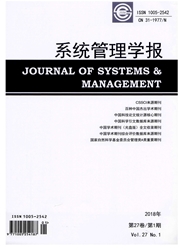

 中文摘要:
中文摘要:
重点关注反洗钱业务流程的信息源头—商业银行,分析其在根据《金融机构大额交易和可疑交易报告管理办法》实施可疑交易报告抽取的过程中面临的条例模糊不清,难以量化等困难,提出利用科学的统计方法——扫描统计判别帐户交易片段异常的流程和算法,并通过来自商业银行的实际金融数据利用实验方法验证了该算法的有效性。实验证明:扫描统计对于合理量化条例中的若干模糊规则十分有效,并能够有效降低反洗钱监测中的第1类错误(误判)概率。
 英文摘要:
英文摘要:
This paper focuses on the original source in anti-money laundering working process-commercial banks. To deal with the difficulty in extracting Suspicious Transaction Reports (SARs) based on the administrative rules for reporting large-value and suspicious activities, we propose a scan statistic based suspicious sequence recognition algorithm. Using real financial data from commercial banks we evaluate our algorithm and demonstrate its efficiency. The experimental results show that thealgorithm can effectively quantify the fuzzy rules in the regulations and reduce the first type error.
 同期刊论文项目
同期刊论文项目
 同项目期刊论文
同项目期刊论文
 Determining Inventor Status and Its Effect on Knowledge Diffusion: A Study on Nanotechnology Literat
Determining Inventor Status and Its Effect on Knowledge Diffusion: A Study on Nanotechnology Literat 期刊信息
期刊信息
